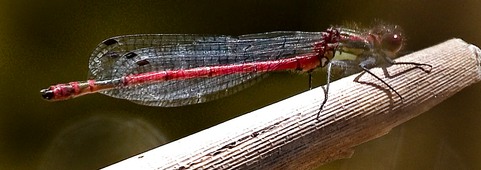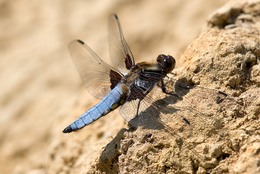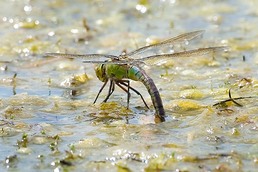

Biodiversity
Action
Plan

Dragonflies and Damselflies (Odonata), flashes of colour around water,are bucking the trend of declining species in Britain with far more gains than losses. See State of Dragonflies 2021, British Dragonfly Society (BDS)
More dragonfly species (including damselflies) are being found in Barnsley - over 20 species have been recorded - and some sites are considered hotspots with a good number of dragonfly species. Their presence is a good indication of the habitat quality of rivers, streams and standing water-bodies and their surroundings; this needs to be conserved.
Species in Barnsley
-increasing nationally
Emperor Dragonfly
Migrant Hawker
Ruddy Darter
Black-tailed Skimmer
Small Red-eyed Damselfly
Broad-bodied Chaser
Four-spotted Chaser
Banded Demoiselle
Southern Hawker
Common Darter
Azure Damselfly
Brown Hawker
Large Red Damselfly
Common Blue Damselfly
Blue-tailed Damselfly
and new to Barnsley
Willow Emerald Damselfly
Red-eyed Damselfly
Small Red-eyed Damselfly
- decreasing nationally
Common Hawker
Black Darter
Emerald Damselfly
Locally important species
BDS lists the species in bold as locally important in Yorkshire. Red-eyed Damselfly and Small Red-eyed Damselfly have restricted ranges; the others are widespread in Yorkshire.
Not found: None of the dragonfly species listed ‘important for conservation’ as ‘endangered’, ‘near threatened’ or ‘nationally scarce’ are found in Barnsley.
The two UKBAP priority/S41 list species are not found locally.
The most important sites hold large, viable breeding populations of dragonflies and damselflies.
Sites where 8 or more species of dragonfly or damselfly are recorded are a local conservation priority and will be considered for Local Wildlife Site status.
Sites with fewer species but a breeding species important in Yorkshire may be also designated a Local Wildlife Site.
British Dragonfly Society
Yorkshire Dragonflies
Dragonfly Species
Emperor Dragonfly, Migrant Hawker and Black-tailed Skimmer, found in Barnsley, are considered important for conservation in Yorkshire. They have increased their distribution nationally.
However a limited number of species also found in Barnsley - Common Hawker, Black Darter and Emerald Damselfly - have declined nationally in the same period.
Some species have now been recorded in Barnsley for the first time:
As it expands northwards, Willow Emerald Damselfly has been recorded here in 2021.
Two species considered important for conservation in Yorkshire, Red-eyed Damselfly and Small Red-eyed Damselfly, have both been recorded in Barnsley recently.
Sites where eight or more species of dragonfly or damselfly are recorded are a local conservation priority and will be considered for Local Wildlife Site status.
Generally, dragonflies are threatened by a variety of issues. These include poor water quality through pollution or agricultural runoff; any loss of or damage to ponds or other water bodies due to infilling, drainage and lowered water tables; intensive farming and over-assiduous tidying up; and in particular decline in insect prey numbers. However these threats are offset by the creation of wetlands and new standing water and climate change is helping some species arrive naturally in Barnsley.
Conservation. Dragonfly and damselfly species in general benefit from measures to improve water quality and the naturalisation of water bodies and their surroundings. More research is needed into any particular needs of individual species. Further information can be found via these links:


Dragonflies are found in Barnsley where there is suitable habitat: wetlands with subsidence flashes, ponds, canals and water-filled ditches, and slow moving rivers and streams. Adults need shelter in tall vegetation near to the breeding site. Important sites in Barnsley recognised by the British Dragonfly Society include Rabbit Ings, with 15 species recorded, and RSPB Old Moor.